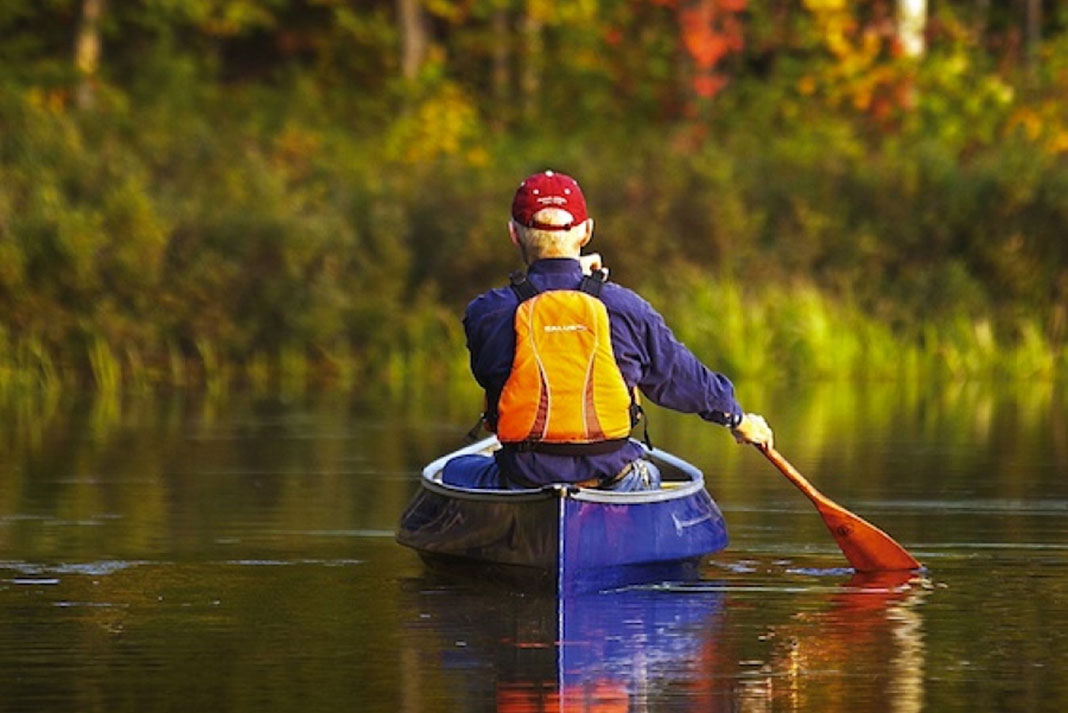Media and geography merged over 130 years ago to create the pack boat, a unique style of canoe that remains popular today. A pack canoe’s short length, wide beam and ultralight construction make it maneuverable and stable on the water, and barely noticeable on long portages. Find out why this classic adventure craft continues to evolve alongside the needs of backcountry canoeists.
Birth of the Adirondack pack boat
In 1880, outdoors writer George Washington Sears, who went by the pen name Nessmuk, approached Canton, New York-based boat-builder John Henry Rushton, requesting a lightweight canoe to carry into the remote ponds of the Adirondacks. Rushton drew on his experience building partially decked Rob Roy sailing canoes and downsized his 13-foot Hunter model to shape the Nessmuk, an open-topped, all-wood, 10-footer that weighed only 18 pounds.
And so a new genre of solo canoe was born. So-called pack boats thrived in the Adirondacks, where long portages and small lakes are the norm. These canoes work well with double-bladed paddles, eliminating the hassle of J-strokes.
Canadian pack boats of old and new
The Canadian equivalent to the Adirondack pack boat was Chestnut’s diminutive, 11- and 12-foot Lightweight and Trapper canoes that were designed for portaging into backcountry trout lakes. Ontario-based manufacturer Nova Craft recently reincarnated this style of canoe with its new Trapper, a stout and stable boat designed for anglers and aimed squarely at competing with less portable fishing kayaks.
“How do you portage a kayak for a mile?” says Nova Craft sales rep Roch Prevost. “We’ve built on the great access of a canoe to make something that carries way more gear and is not nearly as restrictive for paddling.”
Pack canoes continue to grow and evolve
Contemporary pack boats bridge the gap between kayaks and canoes. While short, peapod-shaped, open-decked Rushton-style canoes still define the category, some manufacturers have gotten creative, adding length, partial decks and kayak-like seating and foot pegs. For instance, Mad River pulls no punches in describing its recently released 13-foot Serenade as a hybrid that’s designed to be propelled with a double-bladed paddle from a seated position. Similarly, Wenonah jumped into the pack canoe market with a Rushton-inspired Wee Lassie and the Canak, a partially-decked take on a 16.5-foot solo hull with hatch-like cutouts for packing gear.
In 2010, Massachusetts-based paddler Skip Ciccarelli demonstrated the potential of propelling a modern, stretched-out pack boat with a double-bladed paddle. Ciccarelli shattered the speed record for paddling the Northern Forest Canoe Trail, a 740-mile route across the northeastern United States. To be sure, Rushton would scarcely recognize Ciccarelli’s sleek, 17-foot Hornbeck canoe. Nor would Nessmuk have ever imagined the 40-mile days and 50-plus miles of portaging involved in tracing the full length of the NFCT in only 25 days.

With pack boats, form follows function
Ciccarelli is an example of the contemporary pack canoe’s versatility. But for industry vets like Charlie Wilson, a designer and co-founder of New York’s Placid Boatworks, it’s the genre’s straightforward design and ease of use that makes it timeless.
“They offer the short learning curve of kayaks,” notes Wilson. “As the population ages, the demand for lightweight boats with user-friendly performance and easier entry and exit means the pack boat concept will be with us for a long while.”
This article was first published in the Fall 2012 issue of Canoeroots Magazine. Subscribe to Paddling Magazine’s print and digital editions, or browse the archives.




Enjoyed this information.